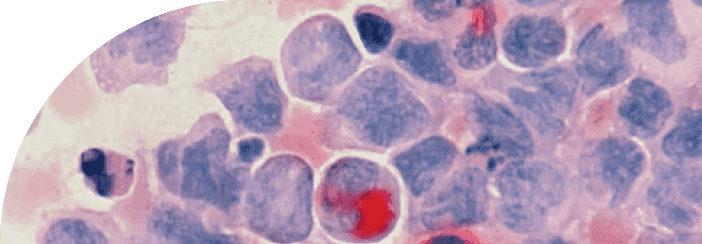
Rapamycin
The most powerful tool to stop the acceleration of aging caused by mTOR dysfunction and cellular senescence.
A common belief is that a high-protein diet will facilitate an increase in muscle mass, strength, and function across the lifespan. However, is a high-protein diet still beneficial in the absence of any resistance-type exercise? Recent evidence from the world-leading laboratory of Professor Dudley Lamming at the University of Wisconsin-Madison has shown a high-protein diet, without any exercise, causes insulin resistance and an accumulation of white adipose tissue in as little as 18 weeks, even when matched for caloric intake. Here we discuss these provocative findings, their mechanisms, and how to prevent them.
rapamycin
nutrition
9 mins
By: Dr Ryan N. Marshall, PhD.
A common belief is that a high-protein diet will facilitate an increase in muscle mass, strength, and function across the lifespan. However, is a high-protein diet still beneficial in the absence of any resistance-type exercise? Recent evidence from the world-leading laboratory of Professor Dudley Lamming at the University of Wisconsin-Madison has shown a high-protein diet, without any exercise, causes insulin resistance and an accumulation of white adipose tissue in as little as 18 weeks, even when matched for caloric intake. Here we discuss these provocative findings, their mechanisms, and how to prevent them.
High-protein diets were popularised in the 1960’s & 1970’s by professional bodybuilders (such as Arnold Schwarzenegger), in which the consumption of 250-300g of dietary protein (in the form of lean meat, milk, eggs and protein powders, over 5-6 meals per day) was deemed to be ‘normal’ in the aim of gaining and maintaining gigantic muscular physiques. Since then, the popularity of high-protein diets has made its way into our lives, with ‘high protein’ foods, snacks, and beverages being ever present on our supermarket shelves and television advertisements. This has resulted in the estimated global net worth of the protein industry being a lucrative >$90 billion per year [1].
The recommended daily allowance (RDA) for dietary protein is currently 0.8g/kg of body mass [2], which for the ‘average’ US male (~80 kg) would equate to ~64g of protein per day. Based on the USA reference dietary intake per day (~2,500 kcals), this would equate to ~10% of their individual energy intake, and it remains to be determined if intake above the RDA is detrimental to human health in the long-term.
Several published reviews over the last 20-years indicate that higher-protein diets of 1.2-1.6g/kg/day (0.5g- 0.7g/lbs/day), and even >2.4g/kg/day (1.1g/lbs/day), which, when combined with resistance exercise training, may result in increases in muscle mass [3] and prevent age-related muscle loss [4].
However, the actual role of dietary protein in these adaptations is minimal. In 2019, a systematic review & meta-analysis of 49 studies by Dr Rob Morton, PhD, from the prestigious laboratory of Prof. Stuart Philips at McMaster University, showed that although dietary protein showed statistically significant increases in muscle mass, the standardized mean difference was only +300g, favoring protein [5]. This was again followed up in 2022 by a systematic review & meta-analyses of 74 studies, in which there were no differences in the standardized mean difference between protein + exercise and protein alone when assessing lean body mass [6].
Overall, this clearly indicates that resistance exercise training stimulus (and maybe even energy balance) itself is more important to increase muscle mass rather than the consumption of dietary protein above the RDA.
In the absence of an exercise stimulus, high dietary protein intakes are still often recommended as part of a balanced, healthy diet across the lifespan [7,8]. Moreover, these high protein diets, ~1.6g/kg/day (0.7g/lbs/day), are often prescribed to older adults in an attempt to prevent age-related muscle loss [4,9]– Are there any side effects of high protein diets?
A common myth is high protein diets cause kidney damage, and in particular, the glomerular filtration rate.
“Glomerular filtration rate (GFR) is a measure of how well the kidneys are functioning to filter waste products and excess fluids from the blood. Specifically, GFR refers to the rate at which blood is filtered through the glomeruli, tiny blood vessels in the kidneys that play a critical role in removing waste and excess fluids from the body. A low GFR can be an indicator of kidney dysfunction or disease, while a normal or high GFR suggests that the kidneys are functioning well.”
This is sadly still often preached by medical professionals, warning of damage to the kidneys as a result of high-protein intake. However, systematic review & meta-analysis data from ~28 studies have observed no effect on GFR rate and, in fact, note an increase in kidney function following the consumption of >1.5g/kg/day (>0.7g/lbs/day) [10]. Overall, dietary protein is not going to cause any damage to your kidneys, even when consumed long-term.
It is well established as we age, we become ‘anabolic resistant’. However, the precise molecular mechanism in which this occurs is relatively unclear.
“Anabolic resistance refers to a reduced ability of the body to build new muscle protein, despite the presence of anabolic stimuli such as resistance exercise or protein intake.”
One theory is the chronic elevation in mTOR in aging, as we have the inability to respond to protein and/or exercise because the machinery controlling the cellular size is already at maximal capacity.
Recent evidence from the Laboratory of Prof. David Glass observed a linear increase in the basal (fasted) activity of RPS6, a downstream target of mTOR, across the lifespan [11]. Notably, the same study administered rapamycin for 6 weeks, resulting in a restoration of mTOR signaling intermediates and reversal of sarcopenia [11].
Therefore, if mTOR is chronically activated in a basal, rested state, then mTOR cannot be further activated in response to protein and/or exercise – Therefore, mTOR activity may need to be restored to ‘youthful’ levels with pharmacological therapies.
Definition: “Sarcopenia is a condition characterized by a loss of muscle mass, strength, and function that occurs as a natural part of aging. It is a gradual and progressive condition that typically begins in middle age and becomes more pronounced in older adults.”
More recently, there has been an increased focus on the role of high-protein diets and the long-term effect of these on insulin sensitivity & adiposity. Intriguingly, acute randomized-control trials and short-term interventions of high protein consumption results in an increase in insulin sensitivity and can even be utilized as pre-meal ‘shots’ to improve postprandial macronutrient handling in type II diabetes [12,13].
High-protein diets are often utilized by clinicians to maintain muscle mass during a period of weight-loss [14]. However, there is also significant evidence of higher protein diets (>30% total energy intake) impairing glycaemic control during weight-loss interventions, even when caloric restriction is apparent and large reductions in fat mass (>10%) are observed [15]. Large-scale epidemiological data of >40,000 individuals suggests an increase in habitual dietary protein increases your risk of cardiovascular disease [16], and insulin resistance [17]. These effects may be in part explained by certain amino acids, notably the overconsumption and elevated levels of the BCAA’s, Isoleucine, and Valine [18].
The recently published manuscript by Michaela Trautman on the pre-print server BioRxiv has compressively evaluated the role of protein intake with and without exercise. As a registered dietician (RD) and PhD candidate under the mentorship of Prof. Dudley Lamming, PhD, her doctoral research has begun to unravel the physiological role of protein restriction, BCAA restriction, and even the restriction of certain amino acids within the diet to enhance body composition, metabolic health, and longevity.
A main hypothesis of her work from Prof. Lamming’s laboratory is the restriction of dietary protein and BCAA’s results in a reduced expression of mTOR activity, resulting in improvements in metabolic health, disease prevention, and increased lifespan.
Michaela’s recent work (published here) probed the effects of a low-protein diet (7% of caloric intake) and a high-protein diet (37% of caloric intake) with and without progressive resistance-type exercise. The representative dietary protein intake in the average 80kg US male would be ~43g of protein (0.5g/kg) & ~231g of protein per day (2.8g/kg). As a result, there were some quite distinct differences between the two diets. Notably, high-protein diets caused an +635% increase in body mass, although this was due to gains in muscle mass, but also fat mass (+212%), and in particular white adipose tissue (+106%) and liver mass. The increased body mass and adiposity also resulted in a 22% increase in fasting blood glucose and a 35% reduction in glycaemic control in response to a glucose tolerance test.
A common misconception is a desire to repeatedly initiate mTOR activation to maximize muscle building. Now, although acute exercise increases mTOR & muscle protein synthesis, repeated chronic exposure to resistance exercise training actually results in a decrease in mTOR gene [19] and protein expression [20] over time.
Nevertheless, the reduced mTOR activity still results in increases in muscle protein synthesis and increased muscle mass over time [19,20]– It’s worthy of note, those adults that reported the greatest gains in muscle mass actually observed the greatest inhibition of genes related to mTOR [19].
In Michaela Trautman’s low-protein vs high-protein investigation, they had a further two groups which consumed the same low/high protein diets but with the addition of resistance-type exercise. Notably, the high-protein diet, when combined with exercise training, resulted in greater gains in lean mass, with no impairments to glycaemic control or the accumulation of fat mass observed in the non-exercise, high-protein group. Overall, exercise prevented all the negative effects associated with high-protein diets.
“While the human and animal data suggesting that increased dietary protein intake is detrimental for metabolic health and increases the risk for numerous age-related diseases is robust, some of the people consuming the highest levels of protein – athletes – are metabolically very healthy.”
We aren’t saying to drastically change your diet and reduce your protein intake, as the long-term evidence in humans isn’t there yet. Protein is categorically essential in the synthesis and maintenance of muscle mass and muscle remodeling, so make sure you’re getting sufficient protein in to facilitate muscle recovery & remodeling after exercise training.
However, if you’re not participating in structured exercise (and you think just increasing your protein is going to make you healthy), the consumption of a high-protein day may be causing some level of metabolic damage in the long term due to the impaired insulin sensitivity, increased insulin-glucagon, and impaired suppression of hepatic glucose production.
This area of research is incredibly exciting, and we are looking forward to more work from Prof. Dudley Lamming, PhD and his lab on how manipulating dietary protein and even certain amino acids can improve metabolic health and longevity.
Citations
[Devries MC, Sithamparapillai A, Brimble KS, Banfield L, Morton RW, Phillips SM. Changes in Kidney Function Do Not Differ between Healthy Adults Consuming Higher- Compared with Lower- or Normal-Protein Diets: A Systematic Review and Meta-Analysis. Journal of Nutrition 2018;148:1760–1775.](https://www.sciencedirect.com/science/article/pii/S0022316622109454?via%3Dihub "'Changes in Kidney Function Do Not Differ between Healthy Adults Consuming Higher- Compared with Lower- or Normal-Protein Diets: A Systematic Review and Meta-Analysis")
[King DG, Walker M, Campbell MD, Breen L, Stevenson EJ, West DJ. A small dose of whey protein co-ingested with mixed-macronutrient breakfast and lunch meals improves postprandial glycemia and suppresses appetite in men with type 2 diabetes: a randomized controlled trial. Am J Clin Nutr 2018;107:550–557.](https://www.sciencedirect.com/science/article/pii/S0002916522028386?via%3Dihub "A small dose of whey protein co-ingested with mixed-macronutrient breakfast and lunch meals improves postprandial glycemia and suppresses appetite in men with type 2 diabetes: a randomized controlled trial")
[Smith K, Taylor GS, Brunsgaard LH, Walker M, Davies KAB, Stevenson EJ et al. Thrice daily consumption of a novel, premeal shot containing a low dose of whey protein increases time in euglycemia during 7 days of free-living in individuals with type 2 diabetes. BMJ Open Diab Res Care 2022;10:2820.](https://drc.bmj.com/content/10/3/e002820.long "Thrice daily consumption of a novel, premeal shot containing a low dose of whey protein increases time in euglycemia during 7 days of free-living in individuals with type 2 diabetes")
[Pasiakos SM, Cao JJ, Margolis LM, Sauter ER, Whigham LD, McClung JP et al. Effects of high-protein diets on fat-free mass and muscle protein synthesis following weight loss: a randomized controlled trial. FASEB J 2013;27:3837–3847.](https://faseb.onlinelibrary.wiley.com/doi/epdf/10.1096/fj.13-230227 "https://faseb.onlinelibrary.wiley.com/doi/epdf/10.1096/fj.13-230227")
[Gordon Smith AI, Yoshino J, Kelly SC, Patterson BW, Klein S, Mittendorfer Correspondence B et al. High-Protein Intake during Weight Loss Therapy Eliminates the Weight-Loss-Induced Improvement in Insulin Action in Obese Postmenopausal Women. CellReports 2016;17:849–861.](https://www.cell.com/cell-reports/fulltext/S2211-1247(16)31286-4?_returnURL=https%3A%2F%2Flinkinghub.elsevier.com%2Fretrieve%2Fpii%2FS2211124716312864%3Fshowall%3Dtrue "High-Protein Intake during Weight Loss Therapy Eliminates the Weight-Loss-Induced Improvement in Insulin Action in Obese Postmenopausal Women")
[Low carbohydrate-high protein diet and incidence of cardiovascular diseases in Swedish women: prospective cohort study. doi:10.1136/bmj.e4026.](https://www.bmj.com/content/344/bmj.e4026 "Low carbohydrate-high protein diet and incidence of cardiovascular diseases in Swedish women: prospective cohort study")
[Malik VS, Li Y, Tobias DK, Pan A, Hu FB. Original Contribution Dietary Protein Intake and Risk of Type 2 Diabetes in US Men and Women. Am J Epidemiol 2016;183:715–728.](https://academic.oup.com/aje/article/183/8/715/1739876?login=false "Dietary Protein Intake and Risk of Type 2 Diabetes in US Men and Women")
[Yu D, Richardson NE, Green CL, Spicer AB, Murphy ME, Flores V et al. The adverse metabolic effects of branched-chain amino acids are mediated by isoleucine and valine. Cell Metab 2021;33:905-922.e6.](https://www.cell.com/cell-metabolism/fulltext/S1550-4131(21)00166-2?_returnURL=https%3A%2F%2Flinkinghub.elsevier.com%2Fretrieve%2Fpii%2FS1550413121001662%3Fshowall%3Dtrue "The adverse metabolic effects of branched-chain amino acids are mediated by isoleucine and valine")
[Phillips BE, Williams JP, Gustafsson T, Bouchard C, Rankinen T, Knudsen S et al. Molecular Networks of Human Muscle Adaptation to Exercise and Age. PLoS Genet 2013;9:e1003389.](https://journals.plos.org/plosgenetics/article?id=10.1371/journal.pgen.1003389 "Molecular Networks of Human Muscle Adaptation to Exercise and Age")
[Langer HT, West D, Senden J, Spuler S, van Loon LJC, Baar K. Myofibrillar protein synthesis rates are increased in chronically exercised skeletal muscle despite decreased anabolic signaling. Scientific Reports 2022 12:1 2022;12:1–11.](https://www.ncbi.nlm.nih.gov/pmc/articles/PMC9085756/?report=reader "Myofibrillar protein synthesis rates are increased in chronically exercised skeletal muscle despite decreased anabolic signaling")
Latest Longevity Research Straight to your Inbox
Sign up for The Longevity Blueprint, a weekly newsletter from Healthspan analyzing the latest longevity research.
Sign up for The Longevity Blueprint, a weekly newsletter from Healthspan analyzing the latest longevity research.





